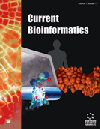- Home
- A-Z Publications
- Current Bioinformatics
- Previous Issues
- Volume 19, Issue 3, 2024
Current Bioinformatics - Volume 19, Issue 3, 2024
Volume 19, Issue 3, 2024
-
-
Deep Learning for Clustering Single-cell RNA-seq Data
More LessAuthors: Yuan Zhu, Litai Bai, Zilin Ning, Wenfei Fu, Jie Liu, Linfeng Jiang, Shihuang Fei, Shiyun Gong, Lulu Lu, Minghua Deng and Ming YiThe development of single-cell RNA sequencing (scRNA-seq) technology provides an excellent opportunity to explore cell heterogeneity and diversity. With the growing application of scRNA-seq data, many computational clustering methods have been developed to further uncover cell subgroups, and cell dynamics at the group level. Due to the characteristics of high dimension, high sparsity and high noise of the scRNA- Read More
-
-
-
Mathematical Modelling and Bioinformatics Analyses of Drug Resistance for Cancer Treatment
More LessAuthors: Lingling Li, Ting Zhao, Yulu Hu, Shanjing Ren and Tianhai TianCancer is a leading cause of human death worldwide. Drug resistance, mainly caused by gene mutation, is a key obstacle to tumour treatment. Therefore, studying the mechanisms of drug resistance in cancer is extremely valuable for clinical applications. This paper aims to review bioinformatics approaches and mathematical models for determining the evolutionary mechanisms of drug resistance and investigating Read More
-
-
-
A Unified Probabilistic Framework for Modeling and Inferring Spatial Transcriptomic Data
More LessAuthors: Zhiwei Huang, Songhao Luo, Zhenquan Zhang, Zihao Wang, Tianshou Zhou and Jiajun ZhangSpatial transcriptomics (ST) can provide vital insights into tissue function with the spatial organization of cell types. However, most technologies have limited spatial resolution, i.e., each measured location contains a mixture of cells, which only quantify the average expression level across many cells in the location. Recently developed algorithms show the promise to overcome these challenges by integrating single-cell and Read More
-
-
-
A Systematic Review of the Application of Machine Learning in CpG Island (CGI) Detection and Methylation Prediction
More LessAuthors: Rui Wei, Le Zhang, Huiru Zheng and Ming XiaoBackground: CpG island (CGI) detection and methylation prediction play important roles in studying the complex mechanisms of CGIs involved in genome regulation. In recent years, machine learning (ML) has been gradually applied to CGI detection and CGI methylation prediction algorithms in order to improve the accuracy of traditional methods. However, there are a few systematic reviews on the application of ML in CGI de Read More
-
-
-
Recent Advances in the Phylogenetic Analysis to Study Rumen Microbiome
More LessAuthors: Jyotsna T. Wassan, Haiying Wang and Huiru Jane ZhengBackground: Recent rumen microbiome studies are progressive due to the advent of nextgeneration sequencing technologies, computational models, and gene referencing databases. Rumen metagenomics enables the linking of the genetic structure and composition of the rumen microbial community to the functional role it plays in the ecosystem. Systematic investigations of the rumen microbiome, including its c Read More
-
-
-
Advancements in Yoga Pose Estimation Using Artificial Intelligence: A Survey
More LessHuman pose estimation has been a prevalent field of computer vision and sensing study. In recent years, it has made many advances that have helped humanity in the fields of sports, surveillance, healthcare, etc. Yoga is an ancient science intended to improve physical, mental and spiritual wellbeing. It involves many kinds of asanas or postures that a practitioner can perform. Thus, the benefits of pose estimation can also b Read More
-
-
-
Application of Improved Support Vector Machine for Pulmonary Syndrome Exposure with Computer Vision Measures
More LessBackground: In many medically developed applications, the process of early diagnosis in cases of pulmonary disease does not exist. Many people experience immediate suffering due to the lack of early diagnosis, even after becoming aware of breathing difficulties in daily life. Because of this, identifying such hazardous diseases is crucial, and the suggested solution combines computer vision and communication processing tec Read More
-
Volumes & issues
-
Volume 20 (2025)
-
Volume 19 (2024)
-
Volume 18 (2023)
-
Volume 17 (2022)
-
Volume 16 (2021)
-
Volume 15 (2020)
-
Volume 14 (2019)
-
Volume 13 (2018)
-
Volume 12 (2017)
-
Volume 11 (2016)
-
Volume 10 (2015)
-
Volume 9 (2014)
-
Volume 8 (2013)
-
Volume 7 (2012)
-
Volume 6 (2011)
-
Volume 5 (2010)
-
Volume 4 (2009)
-
Volume 3 (2008)
-
Volume 2 (2007)
-
Volume 1 (2006)
Most Read This Month
Article
content/journals/cbio
Journal
10
5
false
en


